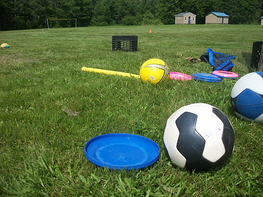This post was written by NobleHour Special Contributor Natasha Derezinski-Choo.
Over the last quarter of a millennium, humans have moved indoors. Beginning in 1750 with the first wave of the Industrial Revolution, a gross migration began to occur when people from rural, outdoor, farming communities moved to cities. Now, more than 50 percent of the world’s population lives in urban areas. In the early stages of industrialization, people were moving to cities for factory work. Now, in the post-industrial economies of the developed world, people have moved up from the factories and are working in office spaces, living stationary lifestyles under fluorescent lights. 
With the invention of universal education that came with industrialization, children have also been brought inside. Education inflation has caused young people not only to spend school hours inside, but also to spend more time inside studying, with everyone sinking down in front of the TV or computer when the long, tiring day is over. Today, we see less-developed countries experiencing the same lifestyle shift that brought us indoors.
Now, I’m not romanticising life before the “Great Indoor Migration”, because I think it has ultimately improved our lives. Without this shift I would probably be spending my day harvesting crops, cleaning the house, and thinking about getting married in five years. Instead, I’m going to school and hoping in five years to start a life and career for myself. The fact of the matter is that we are now living indoors more, and it’s time to spend a little time being active outside.
The fun, animated video “What if You Stopped Going Outside?” describes health risks and problems that could arise from not spending enough time outside - including osteoporosis, depression, and even cancers.
Furthermore, the Harvard Health Letter gives some of the benefits of spending time outside. These benefits include getting more vitamin D, more exercise, a happier life, better concentration, and a better healing time in the event of injury (you can read more about how sunshine and fresh air help these processes). Being outside feels good and is good for you. Being outside and being active go hand in hand with being healthier and happier, but the main problem facing most people is finding time to be more active. Volunteering outdoors is a great way to merge outdoor activities with community engagement. You will be impacting the community by volunteering and helping yourself by being active.

While out in nature, you are inevitably active. Hiking, climbing, and running are all ways we interact with nature while being active. It is also important to protect the environment around us so it can sustain us and an active lifestyle. Volunteering with organizations concerned with the environment is a great way to get active and volunteer. Some outdoor environmental projects could entail planting a community or urban garden or helping clean up a river, beach, highway, or nearby park. To find these types of opportunities, look up local parks and environmental organizations. Remember not only to keep it outdoorsy and active, but to keep it local too. Part of being more active is also getting out of those cars and using your legs as transportation. Cars pollute the environment, so if you are trying to improve the environment and enjoy your time outdoors, do your best not to pollute it even more. Plus, you’ll have a direct impact on your own local community.
Sports are another way people enjoy their time outdoors. Walks and marathons are common fundraising events, and nonprofits are always in need of volunteers to register runners, hand out water, stand along the route and encourage the racers. For example, the Canadian Breast Cancer Foundation CIBC Run for the Cure and the Susan G. Komen Race for the Cure in the States are two runs held to support breast cancer research and breast cancer survivors. Right now, October is Breast Cancer Awareness Month, but the events are held year round. Local organizations may also hold fundraising races for local causes. In Greensboro, NC, an event call the Chicken Walk will take place next month to raise money to help the Interactive Resource Center, a local resource that helps people experiencing homelessness, keep its doors open. A fantastic woman named Amy Murphy began the project by taking chicken that restaurants were throwing away, and feeding it to the homeless, who she refers to as her “friends downtown.” If you are in the area, find out more about this year’s inaugural Chicken Walk. Volunteering with athletics is a great way to help with an important cause, but volunteering actively can also mean supporting the cause of physical activity and exercise itself.

Volunteer coaching or hosting a field day are both great ways to get outdoors. Not only will you be active, get outside, and have fun, but you’ll also bring the importance of being active to children growing up in the “Great Indoor Migration”. You’ll become a positive mentor and leader to the kids you work with. You can inspire them to lead healthier lives, develop sportsmanship, and enjoy just being a kid. To find these kinds of opportunities, team up with local schools, parks, and recreation centres to get involved or to pioneer your own program geared toward fitness.
What are some ways you are tracking your Noble Impact™ by getting active outdoors?
Classroom image via FotoPedia









